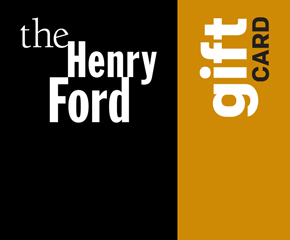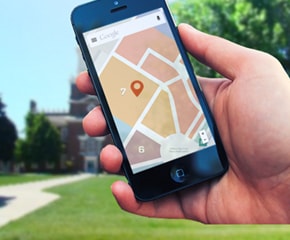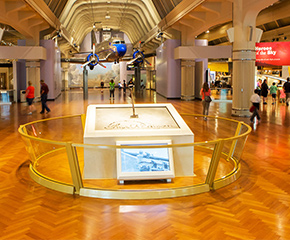















Henry Ford's Private Railroad Car "Fair Lane," 1921
Add to SetSummary
By 1920, Henry and Clara Ford found it increasingly difficult to travel with any degree of privacy. They purchased a private railcar and named it Fair Lane. The car had four private rooms, an observation lounge, a dining room, and a fully equipped kitchen. It could accommodate eight passengers. The couple made over 400 trips using Fair Lane before selling the passenger car in 1942. …
By 1920, Henry and Clara Ford found it increasingly difficult to travel with any degree of privacy. They purchased a private railcar and named it Fair Lane. The car had four private rooms, an observation lounge, a dining room, and a fully equipped kitchen. It could accommodate eight passengers. The couple made over 400 trips using Fair Lane before selling the passenger car in 1942.
By 1920 Henry Ford's fame was such that he could no longer travel with any degree of privacy. The Fair Lane, Henry Ford's private railcar, was his solution. Private railcars, originally developed for railroad officials as business cars, offered wealthy individuals customized access to the vast railroad systems of The United States and beyond. Fair Lane was ordered from The Pullman Company in 1920 to Henry and Clara Ford's specifications. It was designed to accommodate eight passengers in four private rooms and included an observation lounge (with platform), a dining room seating eight, and a fully equipped kitchen with adjoining accommodation for the cook and porter. Between 1921 and 1942 the Fords and their family used the Fair Lane for over 400 trips, many of them business related, but also including regular journeys to their winter home in Florida (and later Georgia), and their summer home in northern Michigan. Clara was particularly fond of using Fair Lane for taking family and friends on visits to New York City. Wartime restrictions on private car use finally prompted the sale of the car. It was acquired and fully modernized by the St. Louis Southwestern Railway Lines for their Executive Department (including president H. J. McKenzie). In 1973 the Fair Lane was in turn sold to the Cherokee Nation and was ultimately used as a tourist office.
Artifact
Passenger car (Railroad car)
Date Made
23 June 1921
Creators
Houghton, Sidney Charles, 1872-1950
Place of Creation
United Kingdom, England, London
United States, Illinois, Kensington
Creator Notes
Made by the Pullman Company in Kensington, Illinois; interior was designed by Sidney Houghton of London, England.
Keywords
United States, Michigan, Dearborn
United States, Oklahoma, Tahlequah

On Exhibit
at Henry Ford Museum in Transportation - Trains
Object ID
96.112.1
Credit
From the Collections of The Henry Ford. Gift of Richard and Linda Kughn.
Material
Steel (Alloy)
Wood (Plant material)
Paint (Coating)
Mahogany (Wood)
Walnut (Wood)
Brass (Alloy)
Technique
Painting (Coating)
Color
Green
Dimensions
Width: 119 in
Length: 88 ft
Inscriptions
Painted on side of car: FAIR LANE Painted on door: OFFICIAL CAR On plate inside: RAIL PASSENGER SERVICES, INC. / TULSON, ARIZONA / FAIRLANE / ORIGINAL BUILDER; PULLMAN 1921 FOR HENRY FORD / REBUILT; RAIL PASSENGER SERVICES, INC. 1986 FOR RICHARD P. KUGHN/RPS On clock: BALL WATCH CO. CLEVELAND On electric tachometer: WESTINGHOUSE, USA On gauge: WESTINGHOUSE, WIUMERDING USA / RED HAND BRAKE CYLINDER / BLACK HAND TRAIN LINE / PAT. DATE JULY 30, 1889

Share Anywhere
Use this Artifact Card to share this great find with others. From historic images to vivid descriptions, a record of rich detail is bundled inside a single card.
Related Content
-
Sidney Houghton: The Fair Lane Rail Car and the Engineering Laboratory Offices
November 3, 2021
Blog -
Behind the Scenes: Photographing the Interior of the Fair Lane Railroad Car
August 26, 2021
Blog -
The Fair Lane Business Car: Restrained Luxury
August 24, 2021
Blog -
Fair Lane: The Fords’ Private Railroad Car
July 28, 2021
Blog -
Three Trips to Tuskegee with the Fords and the Fair Lane
July 8, 2021
Blog




